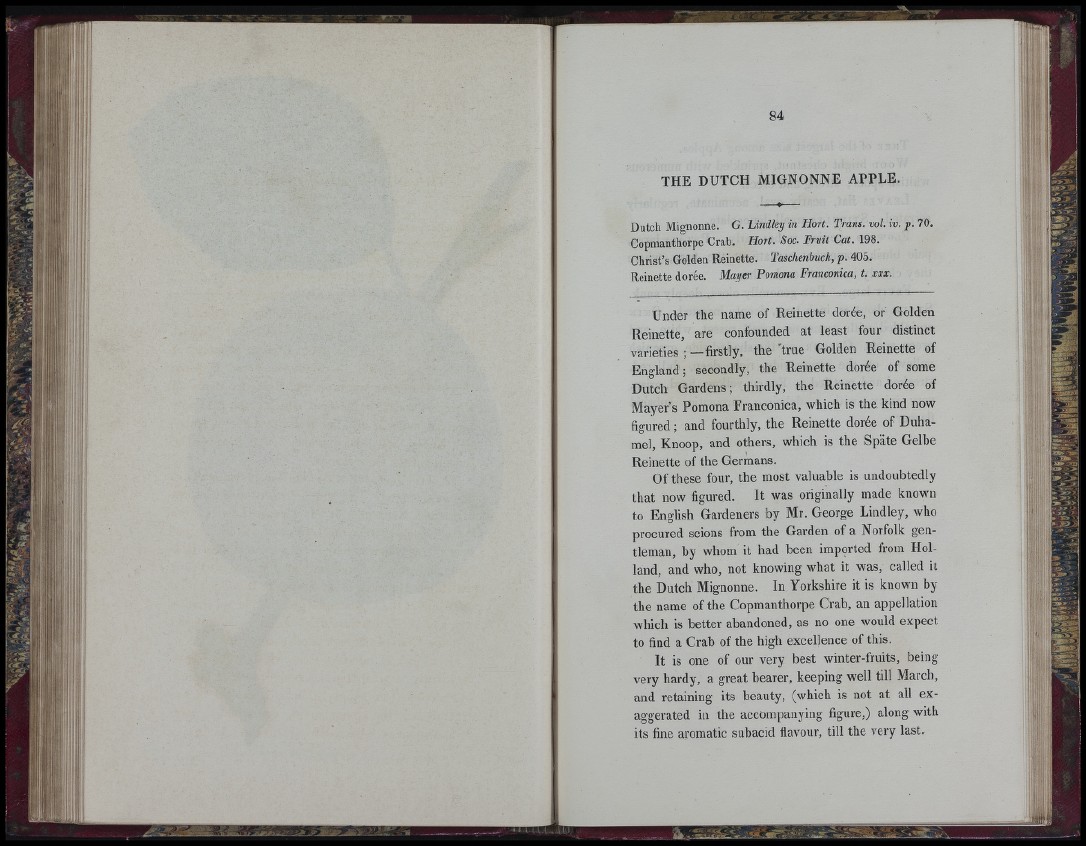
Fil
THE DUTCH MIGNONNE A P PL E .
Dutch Mignonne. G. Lindley in Hort. Trans, vol. iv. p. 70.
Copmanthorpe Crab. Hort. Soc- Fruit Lat. 198.
Christ’s Golden Reinette. Taschenhuch, p. 405.
Reinette dorée. Mayer Pomona Franconica, t. xxx.
Under the name of Reinette dorée, or Golden
Reinette, are confounded at least four distinct
varieties ; — firstly, the True Golden Reinette of
England ; secondly, the Reinette dorée of some
Dutch Gardens; thirdly, the Reinette dorée of
Mayer’s Pomona Franconica, which is the kind now
figured ; and fourthly, the Reinette dorée of Duhamel,
Knoop, and others, which is the Späte Gelbe
Reinette of the Germans.
Of these four, the most valuable is undoubtedly
th a t now figured. I t was originally made known
to English Gardeners by Mr. George Lindley, who
procured scions from the Garden of a Norfolk gentleman,
by whom it had been imported from Holland,
and who, not knowing what it was, called it
the Dutch Mignonne. In Yorkshire it is known by
the name of the Copmanthorpe Crab, an appellation
which is better abandoned, as no one would expect
to find a Crab of the high excellence of this.
I t is one of our very best winter-fruits, being-
very hardy, a great bearer, keeping well till March,
and retaining its beauty, (which is not at all ex aggerated
in the accompanying figure,) along with
its fine aromatic subacid flavour, till the very last.
J i f